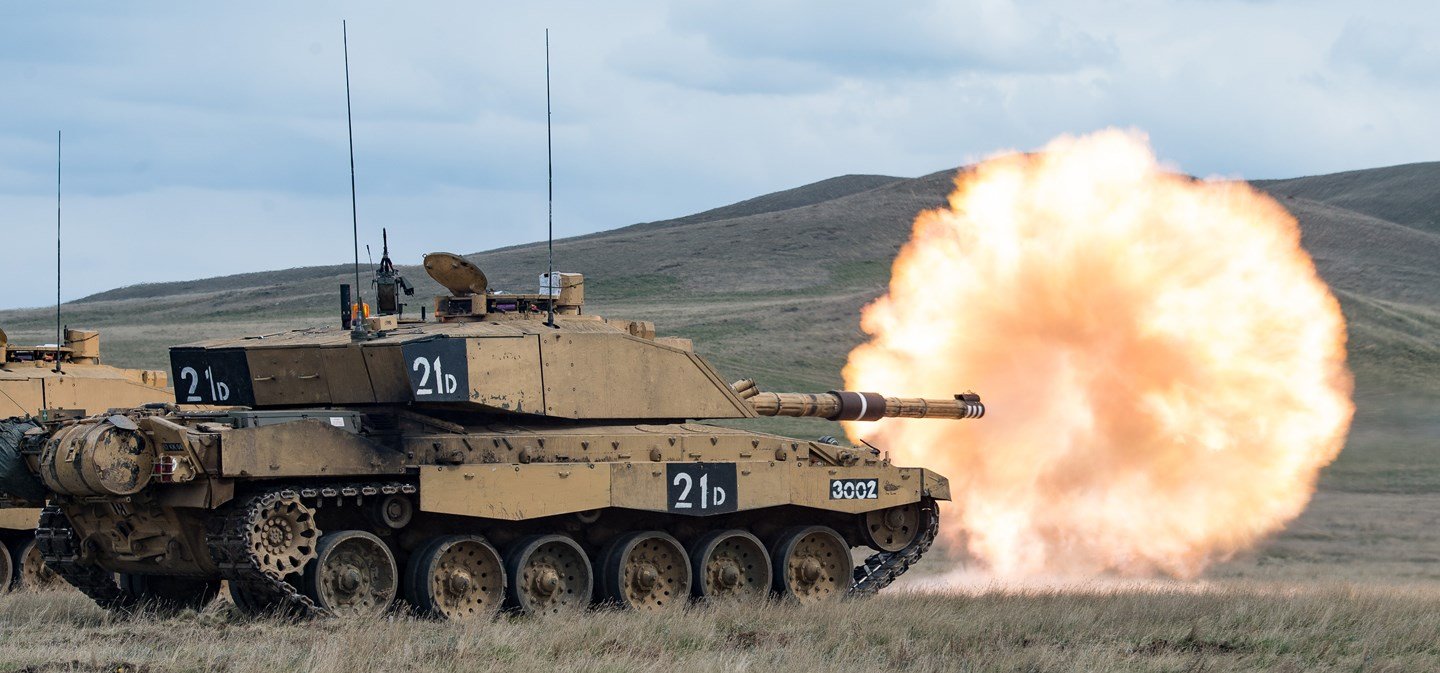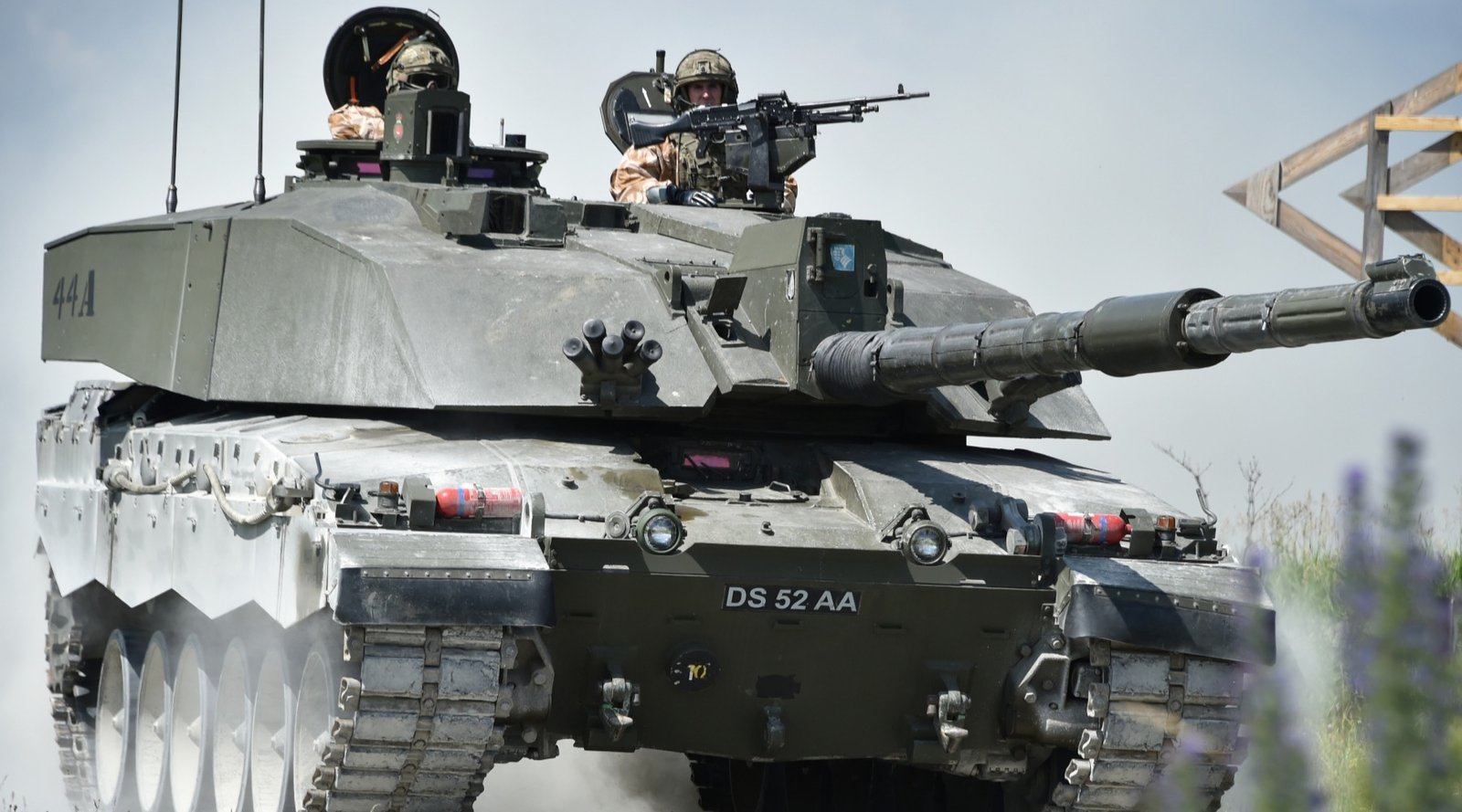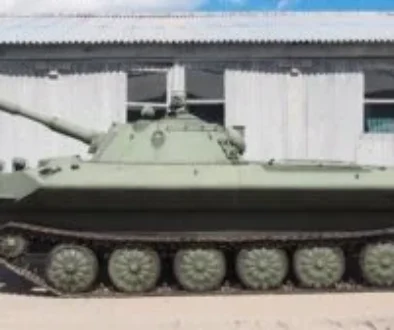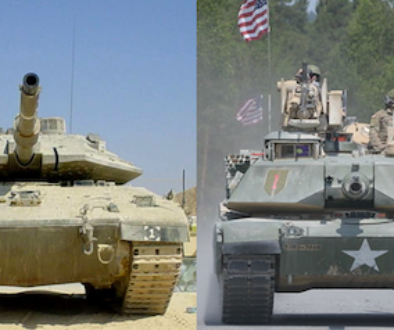Operation Iraqi Freedom (OIF), launched in March 2003, marked a significant chapter in modern military history, with coalition forces seeking to remove Saddam Hussein’s regime from power and stabilize Iraq. Among the armored vehicles deployed during OIF, the Challenger 2 main battle tank (MBT) played a pivotal role in ground operations, showcasing its formidable firepower, protection, and mobility in the harsh desert terrain. In this article, we delve into the experiences of the Challenger 2 in OIF, examining its performance, challenges faced, and the lessons learned from its deployment.

The Challenger 2: Overview and Characteristics:
Developed by BAE Systems Land Systems (formerly Vickers Defence Systems), the Challenger 2 is the British Army’s primary MBT, renowned for its exceptional armor protection, firepower, and reliability. Weighing approximately 62 metric tons, the Challenger 2 is powered by a Perkins CV12 diesel engine, capable of propelling it at speeds of up to 37 miles per hour (60 kilometers per hour) on both road and off-road terrain. Its primary armament consists of a 120mm L30 rifled gun, capable of firing a variety of ammunition types, including armor-piercing fin-stabilized discarding sabot (APFSDS) rounds and high-explosive squash head (HESH) rounds.
Deployment in Operation Iraqi Freedom:
During Operation Iraqi Freedom, the British Army deployed a contingent of Challenger 2 MBTs as part of the coalition forces tasked with ousting Saddam Hussein’s regime and stabilizing Iraq. The Challenger 2s were deployed primarily in southern Iraq, where they faced a variety of challenges, including urban combat, improvised explosive devices (IEDs), and insurgent attacks.
Performance and Successes:
Despite the challenges encountered, the Challenger 2 MBT proved to be a formidable asset on the battlefield, demonstrating its effectiveness in a variety of combat scenarios. One of the key strengths of the Challenger 2 was its exceptional armor protection, which proved critical in safeguarding crew members from enemy fire and IED attacks. The tank’s Chobham armor, combined with its reactive armor packages, provided superior protection against a range of threats, including rocket-propelled grenades (RPGs) and improvised explosive devices (IEDs).

In terms of firepower, the Challenger 2’s 120mm rifled gun proved highly effective against enemy armor and fortified positions. The tank’s advanced fire control system and thermal imaging sights enabled accurate targeting and engagement of enemy targets at extended ranges, enhancing the crew’s situational awareness and lethality on the battlefield. Additionally, the Challenger 2’s mobility and maneuverability allowed it to traverse the challenging desert terrain of Iraq with relative ease, maintaining operational tempo and responding rapidly to emerging threats.
Challenges and Lessons Learned:
While the Challenger 2 performed admirably during Operation Iraqi Freedom, it also faced a number of challenges that highlighted areas for improvement and adaptation. One of the primary challenges was the threat posed by improvised explosive devices (IEDs), which proved to be a significant hazard to both Challenger 2 MBTs and their crews. Despite its formidable armor protection, the Challenger 2 was not immune to the effects of IEDs, and several tanks were damaged or disabled as a result of these attacks.
Another challenge faced by Challenger 2 crews was the urban combat environment, particularly in densely populated areas such as Basra and Baghdad. The confined spaces and narrow streets of urban areas limited the maneuverability of the Challenger 2, making it vulnerable to ambushes and close-quarters engagements. Additionally, the presence of civilian populations in urban areas presented ethical and operational dilemmas for Challenger 2 crews, requiring them to exercise restraint and discretion in their use of lethal force.
In response to these challenges, British forces operating Challenger 2 MBTs in Iraq implemented a number of adaptations and modifications to enhance the tank’s survivability and effectiveness. These included the addition of supplemental armor packages to improve protection against IEDs and RPGs, as well as the development of new tactics and procedures for operating in urban environments. Additionally, enhanced training and proficiency in counterinsurgency operations were prioritized to better prepare Challenger 2 crews for the challenges of asymmetric warfare.
Close-up of muzzle showing rifling
Legacy and Impact:
The deployment of Challenger 2 MBTs in Operation Iraqi Freedom left a lasting legacy on the British Army and the wider defense community. The experiences gained from combat operations in Iraq provided valuable insights into the capabilities and limitations of the Challenger 2, informing future developments and upgrades to the tank’s design. Additionally, the performance of the Challenger 2 in OIF underscored the importance of adaptable and resilient armored forces in modern conflicts, reaffirming the relevance of MBTs in contemporary warfare.
In conclusion, the deployment of Challenger 2 MBTs in Operation Iraqi Freedom showcased the tank’s formidable capabilities and resilience in the face of diverse and dynamic threats. Despite the challenges encountered, Challenger 2 crews demonstrated professionalism, courage, and adaptability in fulfilling their mission
Main Illustration – A Challenger 2 in Iraq, 2003. Photo: Cpl Paul (Jabba) Jarvis RLC/MOD



